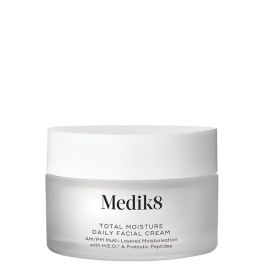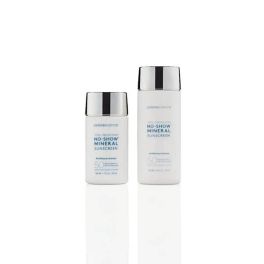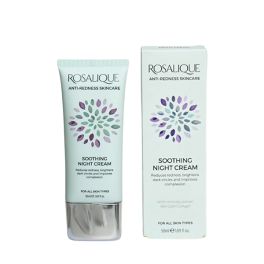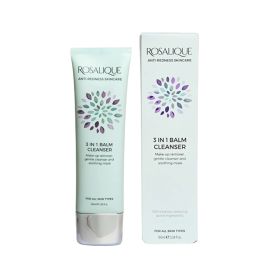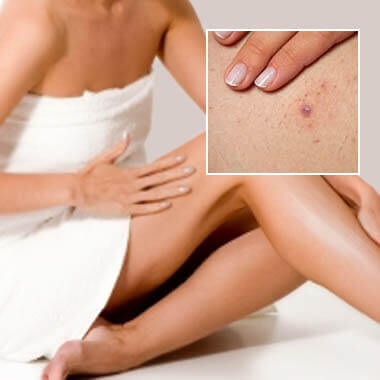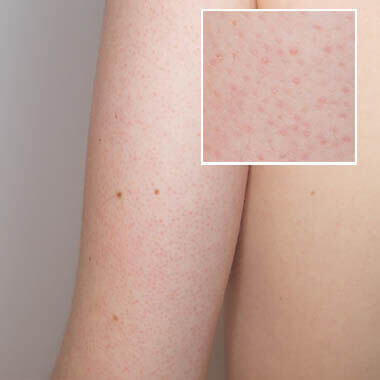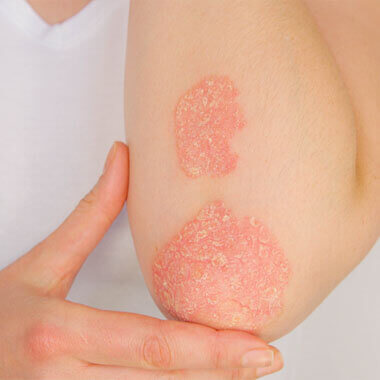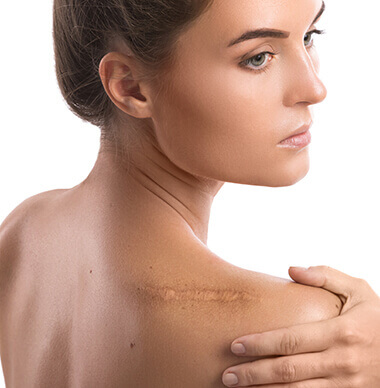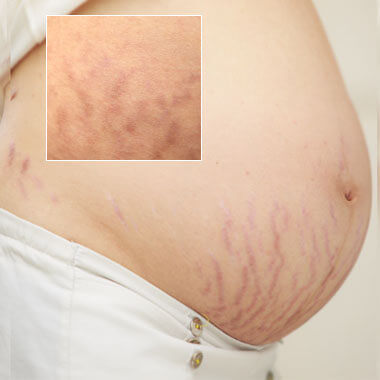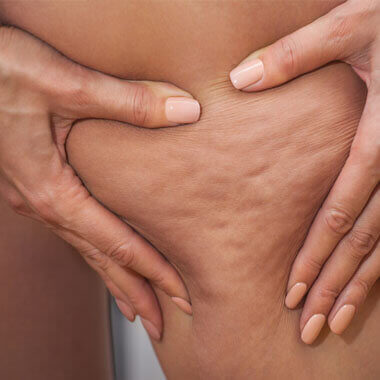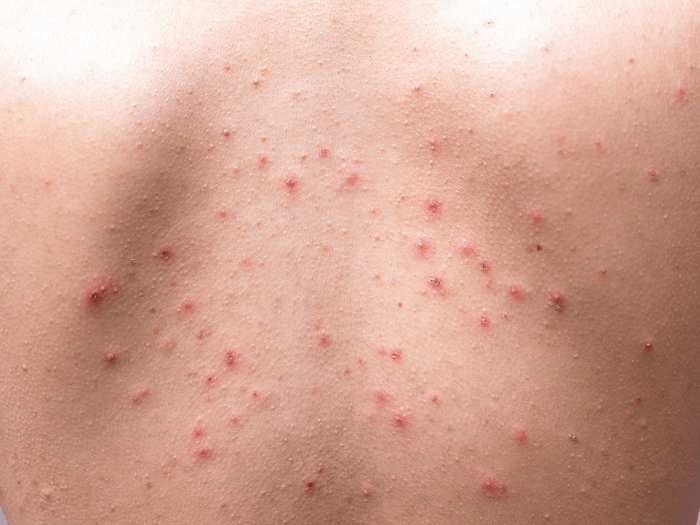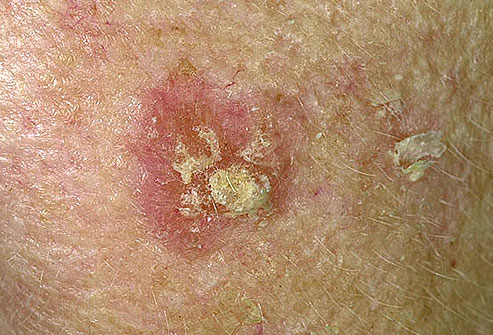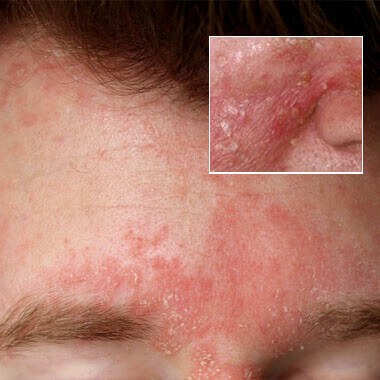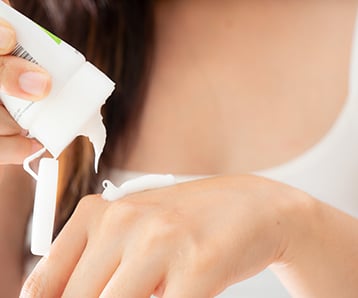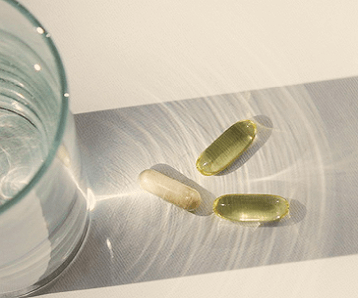10 Common Body Skin Problems And How To Address Them Posted on 8 Dec 2021
PROBLEM: Ingrown hairs
Most people experience ingrown hairs, also known as Pseudofolliculitis Barbae or razor bumps. Ingrown hairs happen when the end of the hair shaft is shaved very low, curling back into the same hair follicle as it grows.
An ingrown hair irritates the skin. It produces a raised, red bump (or group of bumps) that looks like a little pimple. Sometimes an ingrown hair can form a painful, boil-like sore. In men, ingrown hairs often pop up as a bunch of little bumps on the chin, cheeks, or neck after they've shaved. In women, ingrown hairs are common on the legs.
SOLUTION:
Daily exfoliating is key to managing ingrown hairs.
The most effective exfoliating ingredients to help manage and prevent ingrown hairs are Salicylic acid products, Azelaic acid & Glycolic acid.
Top seller: PFB Vanish + Chromabright
PROBLEM: Keratosis Pilaris
Keratosis Pilaris is a very common skin condition that crops up on the arms, legs, buttocks and cheeks in the form of small, painless red bumps. It can cause your skin to feel rough and dry, signalling that it’s in need of hydration! The cause of keratosis pilaris is unknown, but it’s thought to be something to do with an overproduction of keratin in the skin, which is also caused by hyperkeratinization.
SOLUTION:
Since there is an overproduction of keratin involved, the best form of treatment is exfoliation with proven exfoliating agents to brush away the dead skin cells that develop as a result. The best exfoliating agents for keratosis pilaris include glycolic acid, lactic acid and salicylic acid. AHAs and BHAs help to remove the glue-like attachments that play a role in keratinization.
Bestseller: NeoStrata Resurface Lotion Plus
Learn more about Keratosis Pilaris in our skincare guide '8 of the best ways to treat Keratosis Pilaris (Chicken Skin) according to the experts'.
PROBLEM: Psoriasis
Psoriasis happens when skin cells renew themselves too quickly. It usually takes up to 28 days for newly formed skin cells to rise to the surface of the skin and separate from healthy tissue, but in psoriasis, it takes just two to six days.
There are several different forms of psoriasis but usually, it appears as red scaling patches which, when scraped or scratched, show fine silvery scales. These patches may affect just a few small areas of the body or they may be very extensive. Psoriasis is most common on the knees, elbows and scalp, but can appear anywhere on the body.
There are many types of psoriasis including Guttate, Plaque, Pustular, Psoriatic Arthritis and Flexural Psoriasis which can affect most areas of the body including the Scalp, Nails, both fingernails and toenails.
SOLUTION:
There is no present cure for psoriasis, but there are a number of drugs and treatments that can relieve and control psoriasis, often for long periods of time.
Look for treatment products that don't contain steroids, ideally with ingredients that help hydrate, and reduce redness & irritation.
It's also important to use moisturisers twice daily to prevent skin drying and cracking. They soften hard skin and plaques and may reduce scaling and itching.
Top seller: Atopiclair Cream(offers powerful hydration, anti-inflammatory, and antioxidant properties)
PROBLEM: Scars
Scars are another skincare concern that many people have, particularly after a surgery or injury. The most aggressive scar types, and the types that people want to avoid, include keloids and hypertrophic scars. These scar types are marked by their raised, ropey, and discoloured appearance.
SOLUTION:
The best way to treat scars is to use clinically-proven methods and doctor-recommended therapies, such as medical silicone gel or sheets.
It is thought that the occlusive barrier which is formed when using silicone gel or sheets, helps hydrate the scar tissue while protecting it from chemical, physical and microbial invasion. It has also been shown that silicone sheets and gels can be beneficial for itching scars, and can also reduce the size and pain/discomfort associated with scars.
Top Seller: Kelo-cote gel
PROBLEM: Stretch marks
Affecting both men and women, stretch marks can occur in times of rapid weight gain or growth, for example during bodybuilding, puberty or for women, pregnancy. Often dark red or purple in colour at first, they eventually fade to a silvery-white, but there are things you can do to minimise their appearance and prevent them from showing up in the first place.
SOLUTIONS:
It’s worth realising that stretch marks can never be eradicated completely once you have them, although over time and with the right high-performance skincare and lifestyle changes, their appearance can be significantly improved.
Top Seller: SilDerm Stretch Mark Prevention Oil Spray (prevent) Science Of Skin Solution For Stretch Marks (treat)
PROBLEM: Eczema
Eczema, also known as dermatitis, is a rash-like skin condition that can show up as irritation and dryness anywhere on the body. It can affect anyone at any age, although those with allergies and asthma may be more prone. It can often present as itchy, inflamed skin that becomes red and cracked.
SOLUTION:
There's no cure, but there are a number of treatments that can relieve and control eczema, often for long periods of time.
Look for treatment products that don't contain steroids, ideally with ingredients that help hydrate, and reduce redness & irritation.
It's also important to use moisturisers twice daily to prevent skin drying and cracking. They hydrate and help reduce itching and irritation.
Top seller: Atopiclair Cream(offers powerful hydration, anti-inflammatory, and antioxidant properties)
PROBLEM: Cellulite
Cellulite, more commonly referred to as ‘orange peel’ affects up to 95% of all women. It is the word used to describe the fat deposits under the skin that outwardly give an uneven ‘dimpling’ or ‘orange peel’ appearance. There are a number of factors that contribute to cellulite. These include genetics, hormones, stress, smoking, inactive lifestyle and obesity.
These factors influence how your body's circulation and lymph systems work. Any restrictions or impairments to these systems allow fat cells to grow in size and become trapped resulting in an uneven distribution of fat - Cellulite!
SOLUTION:
Products that are formulated to firm and tone the skin and reduce the appearance of cellulite. Ingredients like stimulating Caffeine smoothes and tighten the contours of the body and peptides to firm and restore elasticity.
Top Seller: Exuviance Professional Body Tone Firming Concentrate
PROBLEM: Body Acne
Body acne generally appears on the back and upper half of the body as opposed to your legs.
The same factors that trigger facial acne can lead to body acne. Namely, overactive oil glands, excess dead skin cells, and acne-causing bacteria can lead to breakouts anywhere on the body.
SOLUTION:
Body acne is still treated in the same way with the regular use of exfoliating skincare products, such as Salicylic acid, Glycolic acid, and Azelaic and Lactic acids.
Top Seller: DermaTx Clarify Salicylic Cleanser
PROBLEM: Actinic Keratosis
Exposure to UV light (especially UVB) or tanning beds causes the proliferation of mutated keratinocytes.
Appearance:
Dry, scaly thick, rough patches on sun-exposed skin. Can sometimes present as an actinic horn. They occur after years of sun exposure and affect both sexes.
Mainly on the face, ears, forehead (especially bald men) hands, and forearms.
Diagnosis:
Harmless, but we generally treat them as they could potentially become squamous cell carcinoma if left untreated.
SOLUTION:
GPs often prescribe topical cream (5-fluorouracil) or use cryotherapy. Some dermatologists treat with photodynamic therapy (PDT)
This Treatment can cause a skin reaction:
-Fiery redness
-Itching
-Dry skin
Effective after-care of the treated skin is therefore important.
Top Seller: ALHYDRAN medical Cream provides this effective after-care.
PROBLEM: Seborrheic Dermatitis
Seborrhoeic Dermatitis is a common non-contagious skin condition affecting millions of people. It is a papulosquamous disorder that affects the sebum-rich areas of the scalp, face and trunk.
Its exact cause is unknown, though cases are often attributed to the overproduction of sebum in the sebaceous glands, the presence of topical organisms such as Malassezia yeasts (formerly known as Pityrosporum Ovale) and inflammatory or immunologic abnormalities.
SOLUTION:
Formulated products to manage the most common symptoms of Seborrheic Dermatitis such as scaling/flaking, reddening, and burning, so plenty of anti-inflammatory and antifungal properties are needed.
Top Seller: Sebclair Duo - Cream And Shampoo (inflammatory and antifungal ingredients)
Learn more about How to treat Seborrheic Dermatitis written by Dermacare's aesthetics experts.













